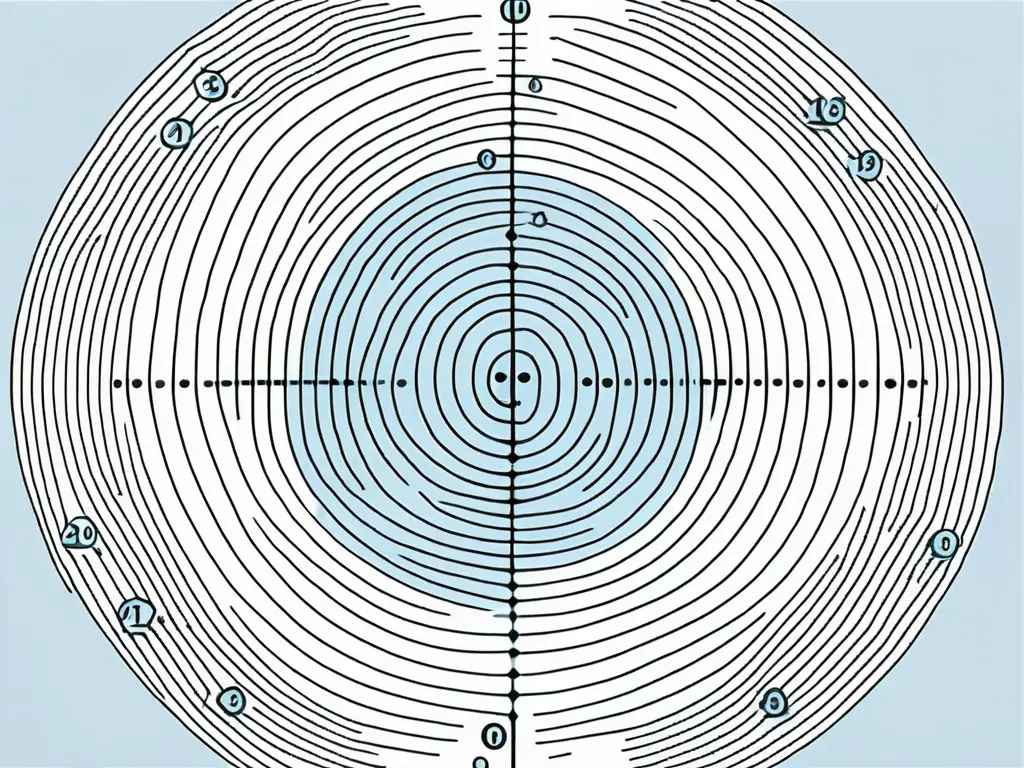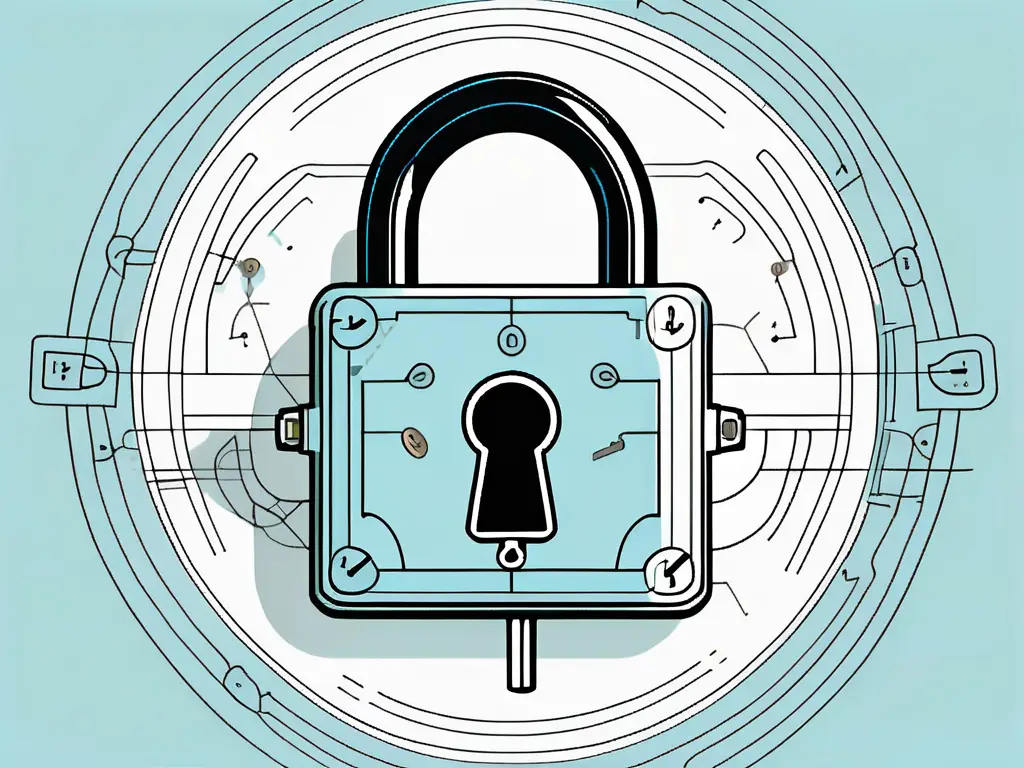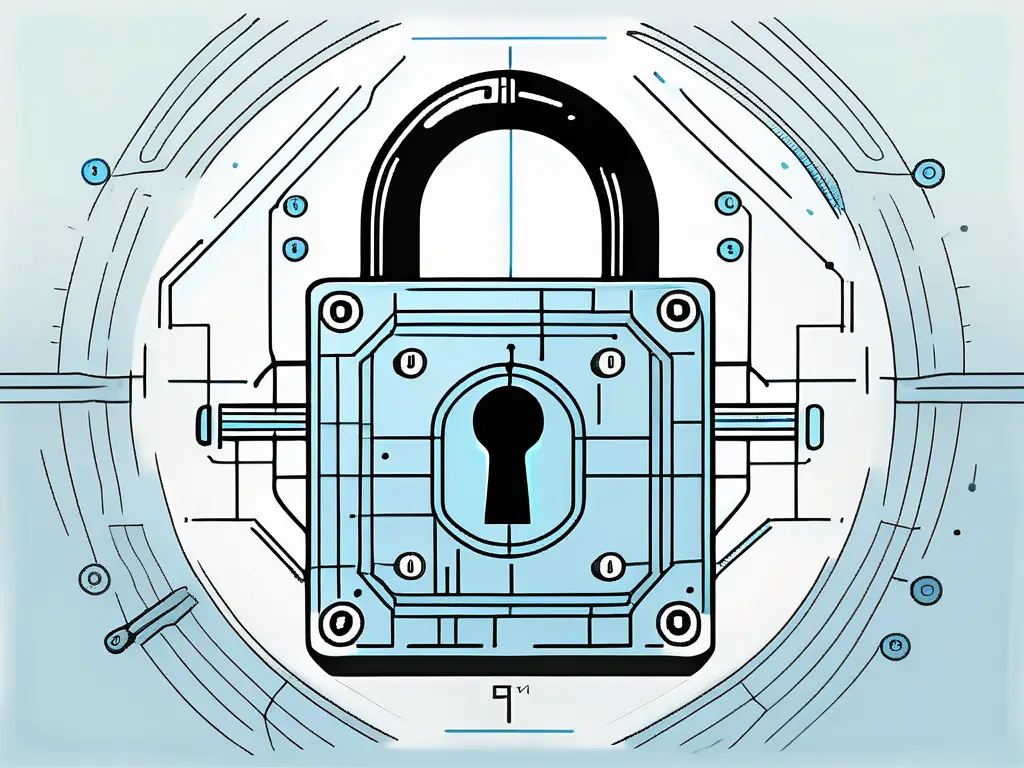Welcome to the fascinating world of Prime Number Factoring in RSA! In this article, we will take a deep dive into the inner workings of one of the most widely used cryptographic algorithms. So fasten your seatbelts and prepare to be amazed by the power of prime numbers!
Understanding Prime Numbers
Before we go any further, let’s make sure we’re on the same page regarding prime numbers. Prime numbers are those beautiful creatures only divisible by 1 and themselves. They are the atoms of the mathematical universe, indivisible and unique.

Prime numbers are like the building blocks of the mathematical world, forming the foundation upon which more complex mathematical structures are built. They are the fundamental elements mathematicians use to unravel the mysteries of the universe, from deciphering patterns in nature to exploring the depths of the cosmos.
The Role of Prime Numbers in Mathematics
Prime numbers have played a pivotal role in the evolution of mathematics. From ancient civilizations to modern-day breakthroughs, these numbers have captivated the minds of mathematicians for centuries. They hold the key to many mysteries, such as the distribution of prime numbers or the notorious Riemann Hypothesis.
The study of prime numbers has led to groundbreaking discoveries in various branches of mathematics, including number theory, algebra, and cryptography. Mathematicians continue to push the boundaries of prime number research, uncovering new insights that shape how we understand the mathematical universe.
Prime Numbers and Cryptography
Now, let’s unlock the door to the captivating world of cryptography, where prime numbers shine the brightest. Cryptography, my friend, is the art of securing information through codes and ciphers. It’s a secret language only those with the proper key can decipher.
In RSA (which stands for Rivest-Shamir-Adleman), prime numbers are the foundation of this powerful encryption algorithm. They ensure the security and confidentiality of digital communications and transactions.
The use of prime numbers in cryptography highlights their significance beyond pure mathematics. They become guardians of our online privacy and security, standing as sentinels against cyber threats and ensuring the integrity of our digital world. As technology advances, the role of prime numbers in cryptography continues to evolve, driving innovation and shaping the future of secure communication.
The Basics of RSA Algorithm
Now that we have a basic understanding of prime numbers and their significance let’s delve into the inner workings of the RSA algorithm. This algorithm is like the Swiss Army knife of modern cryptography. It allows us to achieve both encryption and digital signatures, ensuring the integrity and authenticity of our data.

Before we proceed, let’s appreciate the genius behind the RSA algorithm. Developed by Ron Rivest, Adi Shamir, and Leonard Adleman in 1977, RSA is named after their surnames. This groundbreaking algorithm revolutionized the field of cryptography and laid the foundation for secure communication over the Internet.
The Mathematical Foundation of RSA
RSA’s heart lies in the beauty of number theory and modular arithmetic. You don’t have to be a math genius to appreciate the elegance of this algorithm. It all starts with selecting two prime numbers, multiplying them together, and keeping it a secret from prying eyes.
RSA relies on the concept of a public-private key pair. The public key is used for encryption, allowing anyone to send secure messages to the owner of the private key. On the other hand, the private key is kept secret and is used for decryption, ensuring that only the intended recipient can read the encrypted messages.
The Importance of Prime Numbers in RSA
Ah, prime numbers, the superheroes of RSA! The algorithm’s security depends on factoring a composite number into its primes, which is an incredibly difficult task. You see, my friend, finding a product’s prime factors is like trying to find a needle in a haystack. The bigger the haystack, the harder it gets!
The strength of RSA encryption lies in the sheer size of the prime numbers used. As computing power increases, longer prime numbers are required to maintain the same level of security. This constant battle between encryption and decryption keeps the world of cryptography ever-evolving and fascinating.
The Process of Prime Number Factoring in RSA
Now that we have grasped the fundamental concepts, let’s dive into the exhilarating process of prime number factoring in RSA. Buckle up, my friend, as we embark on a journey through key generation, encryption, and decryption.
Prime number factoring lies at the heart of RSA encryption, a cornerstone of modern cryptography. The security of RSA encryption is based on the difficulty of factoring the product of two large prime numbers. This process forms the foundation of RSA’s strength, as the factorization of large numbers becomes computationally infeasible, ensuring the security of encrypted data.
Key Generation in RSA
The RSA algorithm generates two distinct keys – public and private keys. The public key is used for encryption and can be freely shared with the world, whereas the private key is kept secret and is used for decryption.
Generating these keys involves complex mathematical operations that ensure the security and integrity of the encryption process. The public key consists of a modulus and an exponent, while the private key includes a different exponent for decryption. These keys work in harmony to provide secure communication over insecure channels.
Encryption and Decryption in RSA
Once the keys are generated, it’s time for the magic to happen! With the public key, we can transform our plaintext message into an encrypted cipher using a fancy mathematical operation. But fear not; only the private key can unlock this encrypted treasure and reveal the original message.
Encryption in RSA involves raising the plaintext message to the public exponent’s power and taking the result’s modulus. This process creates the ciphertext, which appears as a jumble of numbers to unauthorized eyes. Decryption requires the private key to reverse this operation, revealing the original message to the intended recipient.
The Security Implications of Prime Number Factoring
We’ve reached an essential point in our journey—the security implications of prime number factoring in RSA. While this algorithm has stood the test of time, it’s not impervious to the ever-evolving world of cybersecurity.

Understanding the intricacies of prime number factoring is crucial in grasping the foundation of RSA security. The beauty of RSA encryption lies in its reliance on the difficulty of factoring the product of two large prime numbers. This process forms the backbone of RSA’s security, as it would take excessive time and computational power to factorize these primes and break the encryption.
Prime Number Factoring and RSA Security
The strength of RSA lies in the computational difficulty of factoring large composite numbers into their prime factors. The larger the primes, the harder it becomes to crack the code. However, as computing power advances, so do the techniques to tackle this challenge.
Delving deeper into prime number factoring unveils a fascinating world of mathematical complexity and cryptographic ingenuity. The elegance of RSA encryption lies in its ability to leverage the fundamental properties of prime numbers to create a secure communication channel. This intricate dance between prime numbers and encryption algorithms forms the cornerstone of modern cybersecurity.
Potential Vulnerabilities and Solutions
As with any cryptographic algorithm, vulnerabilities may emerge over time. It’s a game of cat and mouse, my dear reader. But fear not, for the minds of brilliant cryptographers are constantly at work, devising new solutions and strengthening the fortress of RSA against potential threats.
Exploring the evolving landscape of cybersecurity reveals a perpetual battle between attackers seeking to exploit weaknesses in encryption schemes and defenders striving to fortify their cryptographic protocols. The quest for secure communication channels drives innovation in cryptography, pushing researchers to develop novel approaches to safeguard sensitive information in an increasingly digital world.
The Future of Prime Number Factoring in RSA
As the digital landscape evolves, so does the future of prime number factoring in RSA. Let’s glimpse what lies ahead and explore the exciting possibilities.
Advances in Quantum Computing and RSA
Ah, the wonder of quantum computing! As this fascinating field progresses, it poses opportunities and challenges for RSA. Quantum computers, with their immense processing power, may potentially render traditional prime number factoring algorithms obsolete. But fret not, for researchers are already exploring new cryptographic solutions to embrace the quantum revolution.
Imagine a world where quantum computers can effortlessly crack RSA encryption, unlocking the secrets of our digital communications. This scenario may seem daunting, but it also presents an opportunity for innovation. Cryptographers are actively developing post-quantum cryptography to create encryption algorithms resistant to quantum attacks. These new algorithms rely on entirely different mathematical principles, ensuring the security of our data in the face of quantum computing’s mighty computational prowess.
The Evolution of Cryptography and RSA
Cryptography, my friend, is an ever-evolving field. As RSA continues to play a significant role in our digital lives, advancements in other encryption techniques may emerge. The future holds exciting possibilities for the dynamic interplay of prime numbers and other mathematical concepts to shape the encryption landscape.
One emerging field is homomorphic encryption, which allows computations on encrypted data without decrypting it. Imagine a scenario where you can perform complex calculations on sensitive information without exposing it to potential adversaries. This revolutionary concept can potentially transform how we handle data privacy and security.
The rise of blockchain technology has introduced new cryptographic challenges and opportunities. The need for secure and efficient encryption algorithms grows as blockchain networks become more prevalent. Researchers are exploring novel approaches, such as lattice-based cryptography, to ensure the integrity and confidentiality of blockchain transactions.
So there you have it—an exhilarating journey through the intricate world of prime number factoring in RSA. We explored prime numbers’ role in mathematics, their significance in cryptography, and the inner workings of the RSA algorithm. We also dived into the security implications and pondered the future of this essential cryptographic puzzle.
Next time you send a secure email or make an online purchase, take a moment to appreciate the hidden power of prime numbers and the immense effort behind their protection. As the proverb goes, “Not all heroes wear capes,” indeed, prime numbers are the unsung heroes safeguarding our digital world!
The importance of robust cybersecurity measures has never been clearer as we’ve explored the intricate world of prime number factoring in RSA and its critical role in safeguarding our digital interactions. Blue Goat Cyber, a Veteran-Owned leader in cybersecurity excellence, stands ready to navigate and protect your business in this complex digital landscape. With our comprehensive expertise in medical device cybersecurity, penetration testing, and compliance, we are dedicated to being your steadfast partner against cyber threats. Don’t leave your digital assets to chance. Contact us today for cybersecurity help and take the first step towards securing your operations with Blue Goat Cyber’s tailored solutions. Embrace security, embrace success.


